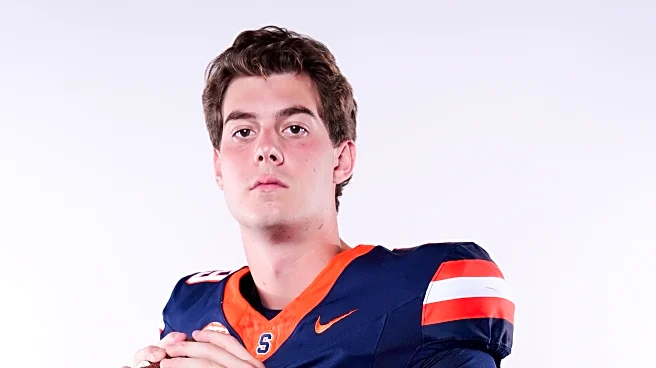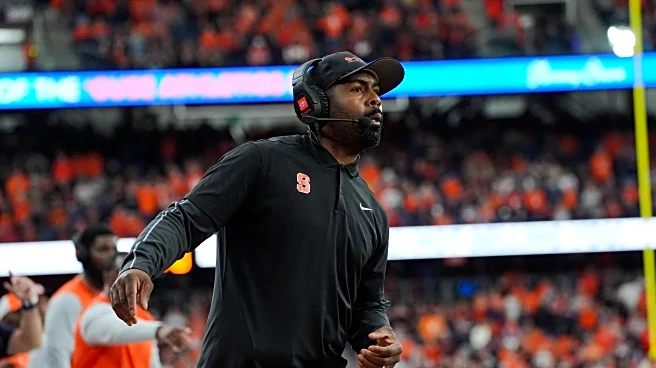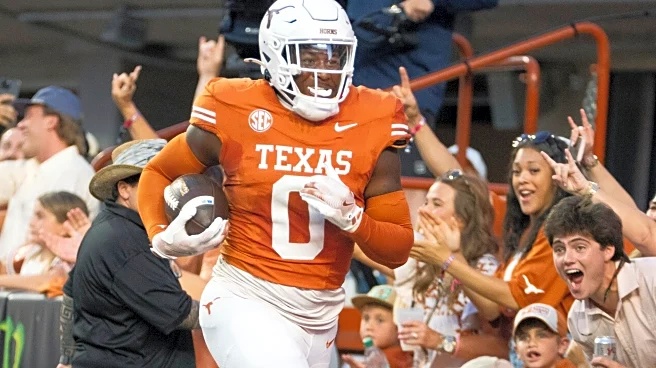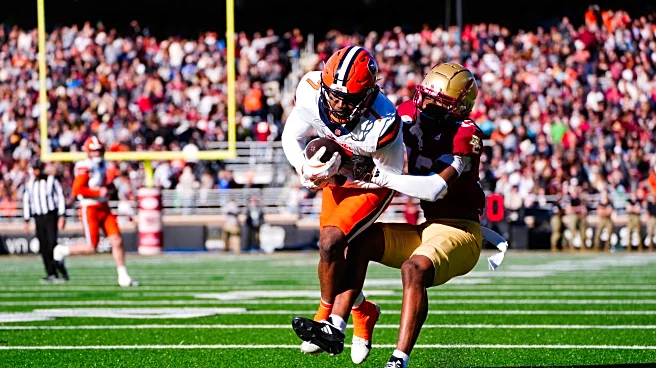What's Happening?
Syracuse University has announced that Steve Angeli, a transfer from Notre Dame, will be the starting quarterback for the upcoming season. Angeli, a redshirt junior, was chosen over LSU transfer Rickie Collins after a competitive training camp. Angeli has previously played 21 games for Notre Dame, including a notable performance in the College Football Playoff semifinal against Penn State. He replaces Kyle McCord, who set records for Syracuse and the ACC last season. Angeli's debut will be against Tennessee in Atlanta, marking a significant start to his tenure with Syracuse.
Why It's Important?
The decision to start Steve Angeli is significant for Syracuse as they aim to maintain their strong offensive performance from last season, where they finished first nationally in passing offense. Angeli's experience and previous performances suggest he could be a key player in sustaining Syracuse's competitive edge. His ability to quickly adapt to Syracuse's offensive strategies will be crucial, especially as he faces Tennessee's Joey Aguilar, another transfer quarterback. This move could impact Syracuse's standing in the ACC and their overall season performance.
What's Next?
Steve Angeli will lead Syracuse in their season opener against Tennessee, setting the stage for his performance throughout the season. His progress will be closely monitored as Syracuse aims to replicate or surpass their previous season's success. Angeli is also scheduled to play against his former team, Notre Dame, later in the season, which could be a pivotal moment for him and Syracuse. The team's strategy and Angeli's adaptation to the new environment will be critical in upcoming games.
Beyond the Headlines
Angeli's transfer and starting position highlight the increasing trend of player mobility in college football, where athletes seek opportunities that align with their career goals. This movement can affect team dynamics and performance, as seen with Angeli's quick integration into Syracuse's system. The broader implications include potential shifts in recruitment strategies and the importance of adaptability in collegiate sports.













